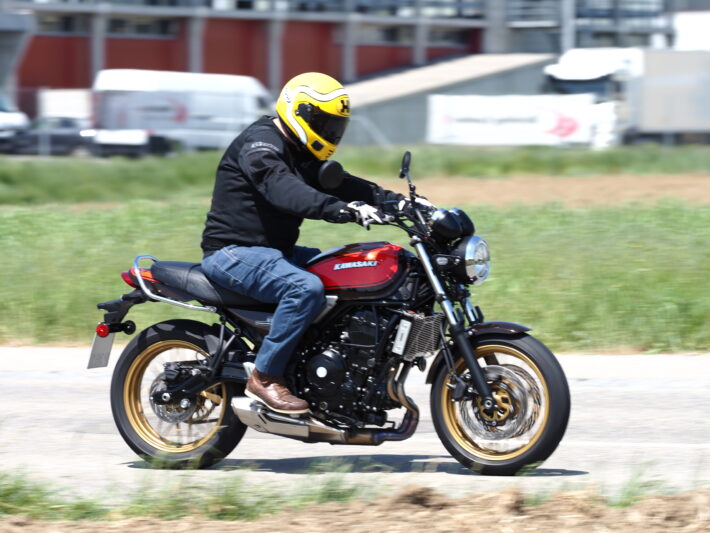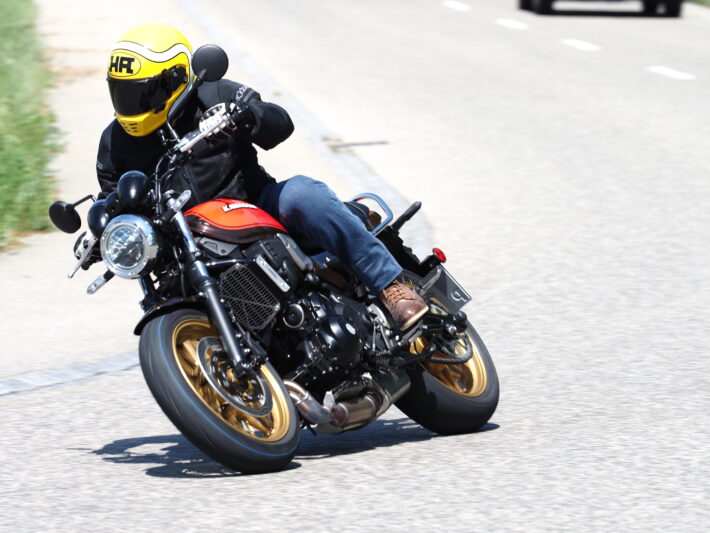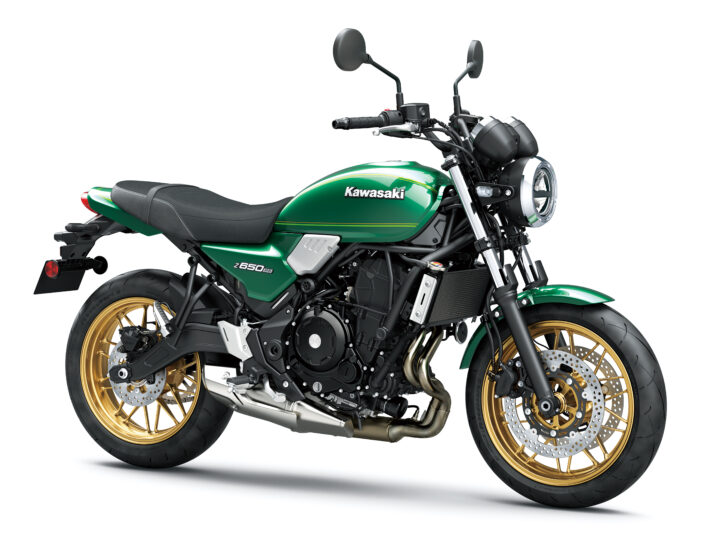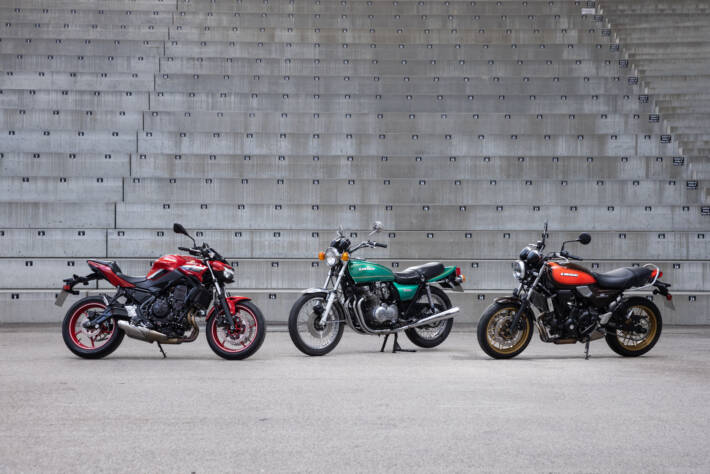Kawasaki Z650 RS Overview
Kawasaki had such a big hit with the Z900 RS that this little 650 version was probably a slam-dunk at the marketing meeting that week. Tap into a historic model name? Use an already-developed engine and chassis package? Charge a nice little premium for a 1970s restyle? Who could say no?

The plans were, no doubt, finalised in the hipster Izakaya bar that night as the marketing wonks took the rest of the week off. And they resulted in a cracking little bike to be fair. The brand heritage comes, of course, from the 1970s Z650, which used an air-cooled two-valve four-cylinder rather than the modern parallel twin four-valve water-cooled design of today.
The four-cylinder machine was launched a few years after the game-changing Z1 900cc superbike, offering the same sort of experience in an upper-middleweight category. Kawasaki reckoned that the 1976 Z650 provided the same performance as a contemporary 750, with less weight and lower running costs.

The modern Z650 has a slightly different background – though just as engaging. Its engine traces its roots back as far as the GPZ500S of the late 1980s – itself a derivative of the 1985 EN450 LTD. Back then it was a modern, high-tech design, with water-cooling, four valve heads and DOHC – it was essentially half of the inline-four GPZ900R engine launched in 1984.
Into the 2000s, the engine expanded into a 650, powering the ER-6n (naked) and ER-6f (faired) roadsters, as well as the Versys 650 adventure machine. The current evolution saw the ER650 models renamed as the Ninja 650 and Z650 – and the retro-styled RS variant appeared in 2022.
The RS is pretty much a cosmetic remake of the modern-styled Z650, with the same engine, chassis, performance and handling. The main changes are on the clocks (dual analogue dials rather than an LCD panel), the shapely fuel tank, and the neat cast wheels which are designed to look like wire spoked rims from a distance. Oh, and you get 70s-style round brake discs instead of gauche modern ‘petal’ fitments.

Under the 70s style is that modern dual-throttle-valve fuel-injected Euro-5 engine, putting out 67bhp from its 638cc capacity (pre-Euro5 Ninja, Versys and Z650 machines have a few more bhp at the top end, but you’ll not notice it day-to-day). There’s a simple but effective steel tube trellis-type frame, conventional unadjustable 41mm front forks and a preload-adjustable horizontally-mounted rear monoshock operated by a slick gull-arm style aluminium swingarm.
The dual 300mm front brake discs are seized by twin-piston sliding calipers and the tyre sizes are sporty enough: a 120/70 17 front and 160/70 17 rear will allow a wide range of touring and performance rubber. Size-wise, the seat height is a comfy 820mm, and the wheelbase is nice and short at 1,405mm.
On the right roads the 650 RS is a delight. Around town, the upright riding position, wide bars and narrow seat make life easy, and the engine is one of the firm’s best, with smooth drive and plenty of torque. There are no complex electronics to worry about, and standard ABS aside, the safety net is down to you and your right wrist. Get out onto a sweeping set of B-road bends, and the fun continues.

There’s enough power (67bhp) to keep in touch with bigger bikes, and the all-up weight of 187kg is decent enough for a standard roadster (the original Z650 weighed around 40kg more while making a few bhp less). The handling is nimble and assured, but the over-riding impression is of a fun, simple package that just works.
You want to avoid motorways though. There’s not much fun hanging onto the bars in a 70+mph wind for any length of time, and it would be a shame to ruin that lush fuel tank with a crappy tank bag. No – if you want to do distance work, or carry a passenger regularly, then a Versys 650 is what you need, despite it being much less pretty.
Because it’s the style which is the Z650 RS’s trump card. It’s such a handsome piece of kit, and looks much more ‘premium’ than you’d expect from the price point. Great work from the Kawasaki marketing folks all round.